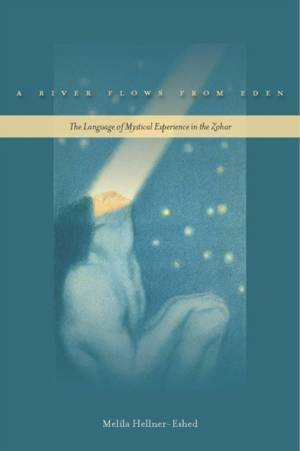
- Afhalen na 1 uur in een winkel met voorraad
- Gratis thuislevering in België vanaf € 30
- Ruim aanbod met 7 miljoen producten
- Afhalen na 1 uur in een winkel met voorraad
- Gratis thuislevering in België vanaf € 30
- Ruim aanbod met 7 miljoen producten
A River Flows from Eden
The Language of Mystical Experience in the Zohar
Melila Hellner-EshedOmschrijving
This bookThe Zohar has long been regarded as the central text of the Jewish mystical tradition--a text that achieved canonical status and was viewed by many as both authoritative and sacred. Written down in Spain at the end of the thirteenth century--but purporting to be a much earlier document--the Zohar exemplifies the exegetical nature of Jewish mysticism, in which the route to a personal experience of the divine was through a special engagement with sacred texts. The Zohar accordingly tells the story of a group of wandering rabbis who read, ponder, and interpret the Torah, a spiritual practice through which the dynamic life of the divine is able to radiate into the world. The Zohar thus enacts a spiritual/exegetical quest, and in doing so, it enables its attentive readers to share in the mystical experiences of its characters. Much previous scholarly study of the Zohar has been directed to figuring out its religious doctrine, explaining its symbols, or identifying its antecedents. By contrast, Hellner-Eshed focuses on the language of the Zohar, concentrating on exploring the nature of what she labels "hermeneutic mysticism." She thus studies the performative strategies of the Zohar in order to understand how the text seeks to invite its readers to share in its own reflexive endeavor, namely to seek to progressively experience the divine through the activity of reading, reflection, and interpretation--what Hellner-Eshed calls "love play with the 'hide and seek' quality of the Zoharic text."
Specificaties
Betrokkenen
- Auteur(s):
- Uitgeverij:
Inhoud
- Aantal bladzijden:
- 488
- Taal:
- Engels
Eigenschappen
- Productcode (EAN):
- 9780804759397
- Verschijningsdatum:
- 29/06/2009
- Uitvoering:
- Hardcover
- Formaat:
- Genaaid
- Afmetingen:
- 155 mm x 229 mm
- Gewicht:
- 771 g

Alleen bij Standaard Boekhandel
Beoordelingen
We publiceren alleen reviews die voldoen aan de voorwaarden voor reviews. Bekijk onze voorwaarden voor reviews.








